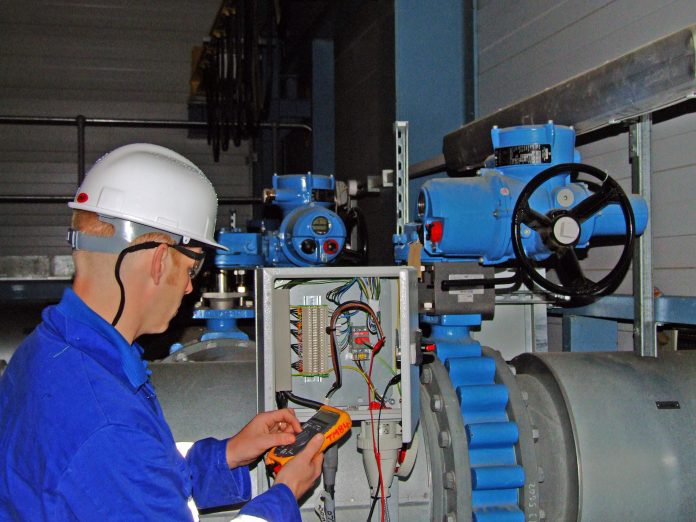Managing fluid and gas flow is a crucial function of valve actuators. They control the flow of liquids and gases through pipelines by opening and closing valves. Electric and pneumatic actuators are two types of valve actuators frequently utilised in industrial settings.
In this article, we will explore the technical differences between the two by learning their working style. We will also learn the pros and cons of electric and pneumatic valve actuators. This will help you determine the type of valve actuators best suited for your application.
What are Electric Valve Actuators?
Electric valve actuators are devices employed to automate the opening and closing of valves in various industrial applications. They replace the manual valve actuators, which are hand-operated, with an electric motor that you can control remotely. They are more accurate and provide more control over the position of the valve. Additionally, they are more convenient to install and require less maintenance.
Types of Electric Valve Actuators
There are two types of electric actuators: linear and rotary. While rotary actuators rotate the valve stem around its axis, linear actuators move the stem in a straight line. They are frequently used in applications that require precision and accuracy, such as pharmaceutical or food sectors.
On the other hand, rotary valve actuators are employed when we require fast opening and closing valves. They are preferred in the chemical or petrochemical sectors.
Pros of Electric Valve Actuators
- Electric valve actuators provide increased control and accuracy over valve position.
- They are simpler to install and easier to maintain.
- They can be programmed to run automatically.
- These valve actuators are better suited for high-precision applications.
Cons of Electric Valve Actuators
- Electric valve actuators are a pricier initial investment than pneumatic actuators.
- At elevated temperatures, the reliability of these valve actuators may suffer.
What Are Pneumatic Valve Actuators?
Pneumatic valve actuators use compressed air to operate valves in industrial applications. These valve actuators have a pneumatic cylinder, a piston, and a mechanism. These devices convert the linear motion of the piston into rotary motion to operate the valve. The cylinder is powered by compressed air, controlled by various input signals such as a solenoid or pilot valves.
These actuators provide dependability and durability. They are employed in demanding industrial settings, such as oil and gas, chemical processing, and water treatment. They are ideal for applications that require high force or torque. These actuators are often used in hazardous environments, where electric actuators may pose a risk of electrical sparks. The three types of pneumatic actuators are piston, diaphragm, and scotch-yoke actuators.
Pros of Pneumatic Valve Actuators
- Pneumatic valve actuators are more affordable than electric actuators.
- They are more dependable in extreme temperatures.
- These valve actuators work best for heavy-duty industrial applications.
- They are easy to operate and maintain.
Cons of Pneumatic Valve Actuators
- Pneumatic valve actuators provide less control over valve location and precision.
- They are difficult to install.
- They may cause noise while operating.
- These valve actuators rely on compressed air to function.
Check the table below to better understand the difference between both types of valve actuators.
| Parameter | Electric Valve Actuators | Pneumatic Valve Actuators |
| Power Source | AC or DC electric motor | Compressed air |
| Control Method | On/off, modulating, proportional control | On/off control |
| Response Time | Faster response time | Slower response time |
| Maintenance | Lower maintenance required | Higher maintenance required |
| Installation | Can be installed in any orientation | Limited to upright orientation |
| Control Signal | Digital or analogue signals | Air pressure |
| Control Complexity | More complex control system can be used | Simpler control system |
| Operating Cost | Higher operating cost | Lower operating cost |
| Environmental Considerations | Produces electrical noise and heat | Produces noise and requires compressed air, which can be costly to generate |
Which Valve Actuator is Right for Your Application?
We must consider various things while choosing between electric and pneumatic valve actuators. These may include application type, the required precision level, the environment around the valve, and the resources available.
The article’s comparison between electric and pneumatic valve actuators is noticeably evident. You can select the ideal valve actuator for your particular demands after researching.










